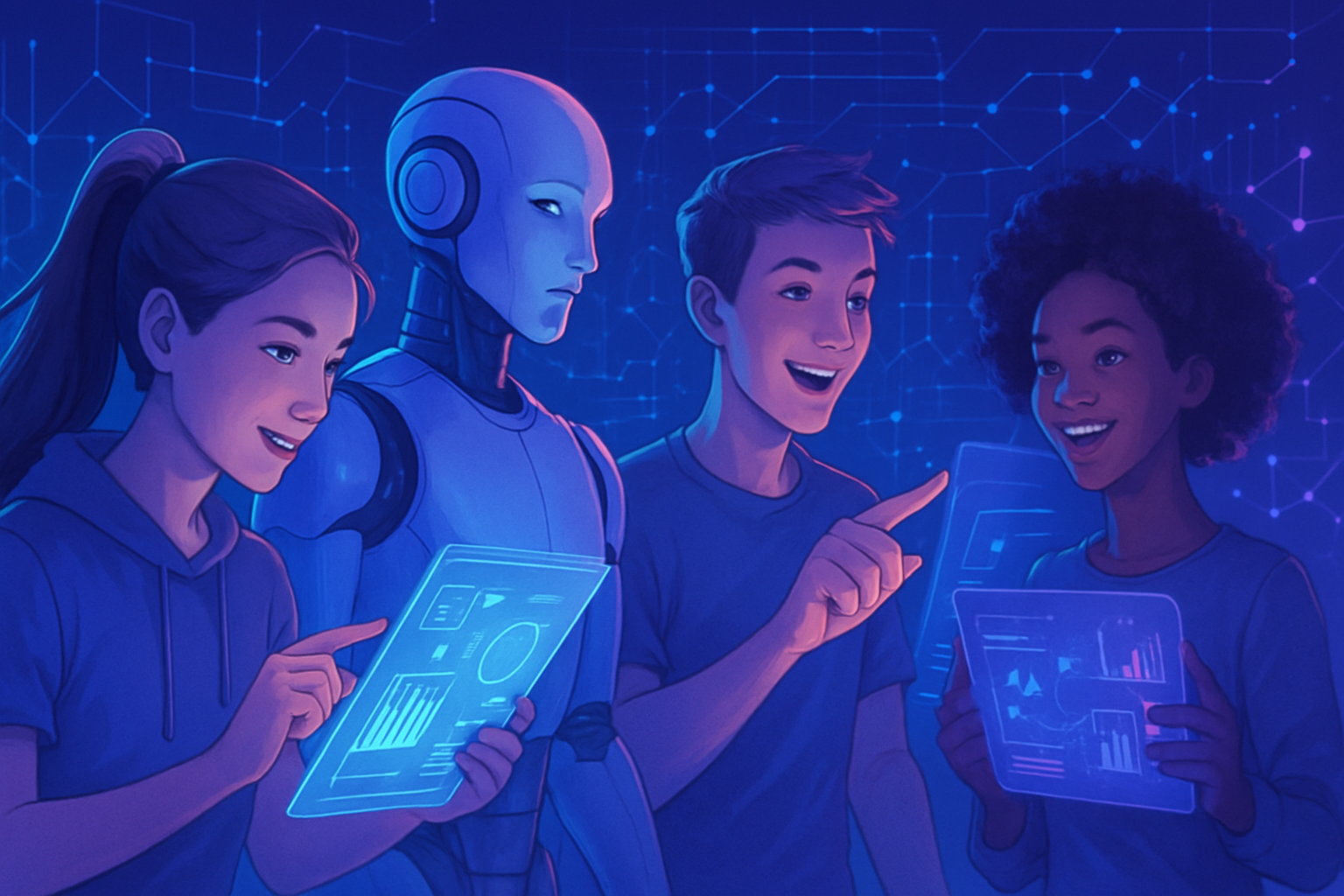The rapid advancements in generative AI are redefining the contours of the labor market. Young workers, particularly those under the age of 25, are feeling the full impact of the transformations brought about by these innovative technologies. A relative decrease in employment is affecting young active workers at the beginning of their careers. The jobs most exposed to automation are seeing their attractiveness collapse, exacerbating the professional precariousness of younger generations. AI could influence job prospects well before it modulates salaries. What strategies should be adopted to navigate this unprecedented context?
The impact of AI on the labor market
A recent study from Stanford University highlights the notable effects of artificial intelligence on the job market, particularly among those under 25. According to this research, young workers, especially those aged 22 to 25, are the most vulnerable to the influx of generative AI in businesses.
Decline in employment among young active workers
The study reveals that since the widespread adoption of AI, employment among young people in highly exposed sectors has declined by 13%. This phenomenon has intensified after 2022, whereas employment trends for other age groups remain positive. By July 2025, employment among software developers in the same age group recorded a decline close to 20% compared to its previous level.
Typology of AI uses
Researchers distinguish two major approaches to AI: automation and augmentation. In the first case, AI directly performs tasks once assigned to employees, such as content writing or code correction. In contrast, augmentation assists individuals by providing suggestions, validations, or resources to enhance their work.
Effects of automation on employment
Basic tasks, generally performed by young workers, are increasingly being assigned to automated systems. This leads to a significant decline in employment in the most exposed sectors, reflecting increased competition between humans and machines. The research highlights that automation seems to impact young recruits more, exacerbating the challenges they face.
Impact of augmentation on employment
In areas where AI is designed to augment human capabilities, employment appears to remain stable or even grow. In these cases, AI provides real support, especially in tasks requiring complex data analysis or continuous learning. Far from replacing workers, AI acts as a complement to their skills.
Persistent stability of wages
Despite the decline in employment among young people, the study indicates no marked fluctuations in salaries. Wages remain relatively constant between 2021 and 2025, even in sectors where AI plays a predominant role. Salaries for young active workers have not been significantly affected by this technological transition, suggesting a certain rigidity in wage adjustments.
Researchers cite possible reasons for this rigidity. Salaries, often adjusted over the long term, do not respond to rapid variations in the labor market. Thus, the immediate impact of AI is mainly felt on hiring rather than on the remuneration of current employees.
Future prospects for young workers
In the future, the effect of AI on the younger generation will need to be monitored, particularly concerning hiring opportunities in increasingly digitized professions. Employment prospects raise questions and highlight concerns about the adequacy of young people’s skills in the face of evolving jobs.
The challenges posed by AI require in-depth reflection on the training and adaptability of young workers so they can fully embrace the ongoing *digital transformation* and access the new *opportunities* it will create.
For more information on the impact of AI on employment, refer to the following articles: Understanding agentification and automation, The impact of AI agents on the Internet, Digital marketing and AI, The impact of smart infrastructures, The impact of AI on human resources.
Questions and answers about the impact of AI on the labor market
What are the main effects of AI on employment for young people under 25?
Young workers, particularly those aged 22 to 25, are heavily affected by AI, with a reduction in employment in the most exposed jobs reaching up to 13%.
Why is automation by AI particularly impactful for young active workers?
Automation replaces a number of basic tasks that young workers perform at the beginning of their careers, leading to a reduction in job opportunities in these roles.
Which jobs are most exposed to AI for young workers?
Professions in the IT sector, such as software developers, as well as positions in services, are particularly vulnerable to the impact of generative AI.
How does AI affect the wages of young workers?
Although young active workers see their employment opportunities decrease, their salaries remain generally stable, with no marked variations between generations or professions.
What types of AI usage impact young employment?
Substitutive uses of AI, which replace human tasks, have a negative impact on employment, while complementary uses, which enhance workers’ capabilities, can stabilize or even stimulate employment.
What is the role of wage rigidity in relation to the impact of AI?
Salaries are often rigid and do not adjust quickly, meaning that the effect of AI on employment is felt primarily in hiring, rather than on current workers’ remuneration.
What solutions could be considered for young workers in the face of AI?
It may be useful to promote training focused on technical and adaptable skills, enabling young workers to access positions that are less vulnerable to automation.
How might the labor market evolve with the rise of AI?
The labor market may evolve towards a greater demand for roles focused on innovation and analysis, while many entry-level jobs may continue to decrease.






